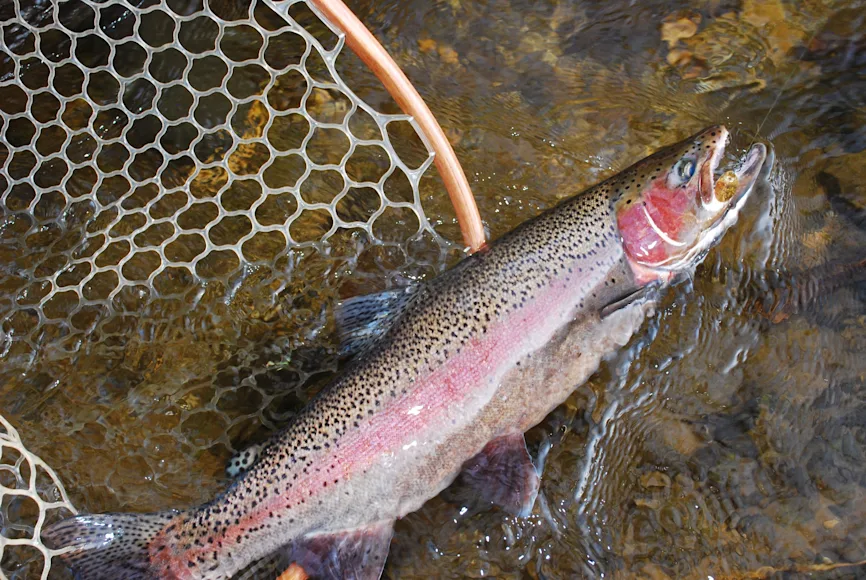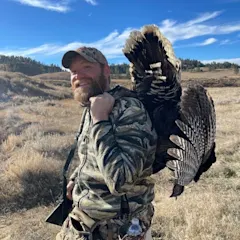Recent cuts to the National Oceanic and Atmospheric Administration (NOAA) have conservationists and scientists worried about anadromous fish populations in the Pacific Northwest. Like other federal agencies, NOAA is undergoing major downsizing. The shrinkage is already disrupting habitat restoration work for salmon and steelhead in California. And if additional budget cuts that are currently in the works come to fruition, the agency's fisheries division could be eliminated entirely, a recently retired NOAA scientist tells Field & Stream.
NOAA lost hundreds of probationary employees to DOGE-led firings back in February, and in the recent White House skinny budget, the Trump Administration proposed more than $1.5 billion in cuts for the agency. Scores of tenured scientists at NOAA have been ushered out via early retirements, as well, resulting in widespread loss of institutional knowledge across the agency.
According to POLITICO, NOAA is currently "immobilized." Housed under the Department of Commerce, the agency is overseen by Commerce Secretary Howard Lutnik. Since he took office in February, Lutnik has insisted on personally reviewing and signing off on any NOAA contract that exceeds $100,000, a process that has created a bottleneck that’s grinding all of the agency’s work to a halt, the outlet reports.
One senior scientist who opted for early retirement in light of the seismic policy shifts underway at NOAA is Brian Cluer. Cluer worked as a Fluvial Geomorphologist for the agency for 25 years before leaving his post less than a month ago. “It’s like dropping a rock in calm water,” Cluer says of recent firings and funding freezes that brought fish habitat work to a screeching halt. “There are ripple effects, and you can’t undo them.”
Cluer says the administration's policies scuttled some of the most promising projects of his career before he retired early on April 30. “My post was in a branch of NOAA called the Engineering and Physical Sciences Branch,” says Cluer. “Coming into the New Year, we had a team of 9 people with approval to hire three more. As it currently stands, there are just four people left on the team. And more cuts are coming.”
Dam Removal Worries
When it comes to salmon and steelhead, Cluer worries most about the potential loss of dam-removal projects in the Pacific Northwest. NOAA played a pivotal role in the removal of four dams on California’s Klamath River in 2023 and 2024, Cluer says. According to Trout Unlimited, the salmon and steelhead came roaring back once the Klamath Dams were removed.
“Salmon live in the Northern Pacific Basin,” Cluers says. “It’s the Ring of Fire. It’s the most dynamic place on Earth. There are earthquakes, tsunamis, glaciers, landslides, and wildfires. In order to survive all of these challenges and exist in large numbers, these fish need freedom of movement. Taking out old defunct dams gives them access to the resources they need to thrive.”

A decade before the Klamath Dams were removed, NOAA and other partners removed dams on the Elwha River in Washington State. Those removals re-opened fish habitat that had been blocked for a century. According to NOAA, the removal has restored four salmon species on the Elwah along with steelhead, sea lamprey, and endangered bull trout.
There are efforts to remove dams on the Lower Snake River in Idaho as well. Longtime proponents of those projects say dam removal on the Snake would allow salmon and steelhead to move freely between the Pacific Ocean and natal spawning grounds in the Intermountain West. “There is a NOAA-preformed feasibility study on the shelf showing how to do that,” Cluer says. “But I don’t think any type of dam removal project is particularly likely under this administration.”
In addition to dam removal work, NOAA provides crucial funding to non-profit conservation partners, as well as state and tribal wildlife agencies. In 2024, NOAA awarded $240 million to partner organizations working on passage projects for anadromous fish; $16.6 million of that went to Trout Unlimited for salmon and steelhead work in the Pacific Northwest and Alaska. The TU money helped remove barriers to fish migration in places like the Tongass National Forest, Washington's Olympic Peninsula, and the so-called Salmon Super Highway on Oregon's North Coast.
Read Next: Will DOGE Cuts Bring an End to the Banding of Ducks and Geese?
But those funds are imperiled now, Cluer says. In addition to the Trump Administration's proposed budget cuts and Lutnick's bottleneck on permit authorization, the House of Representatives' just-passed "One, Big Beautiful Bill Act" would strip fish passage funding from NOAA that was allocated through the Inflation Reduction Act of 2022. "Unless something is done to correct course, we will see less fish in these areas where restoration work has been key to re-establishing their numbers," Cluer says. "And as our populations continue to grow, we'll have more people fishing for fewer fish."


